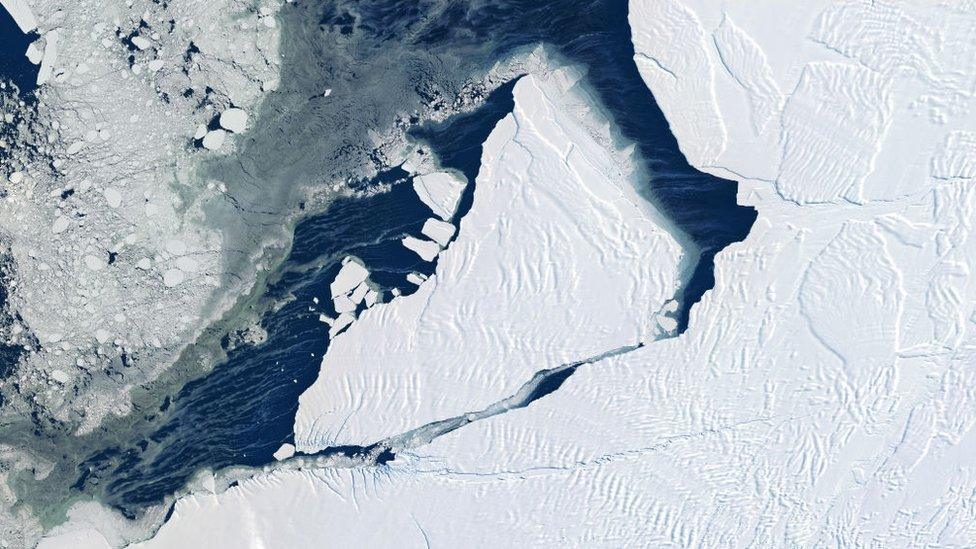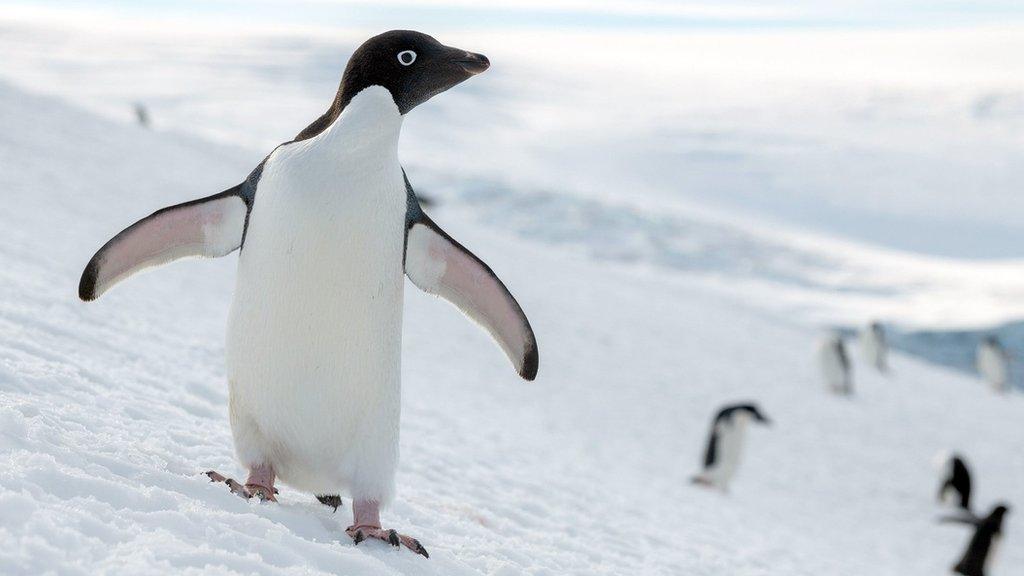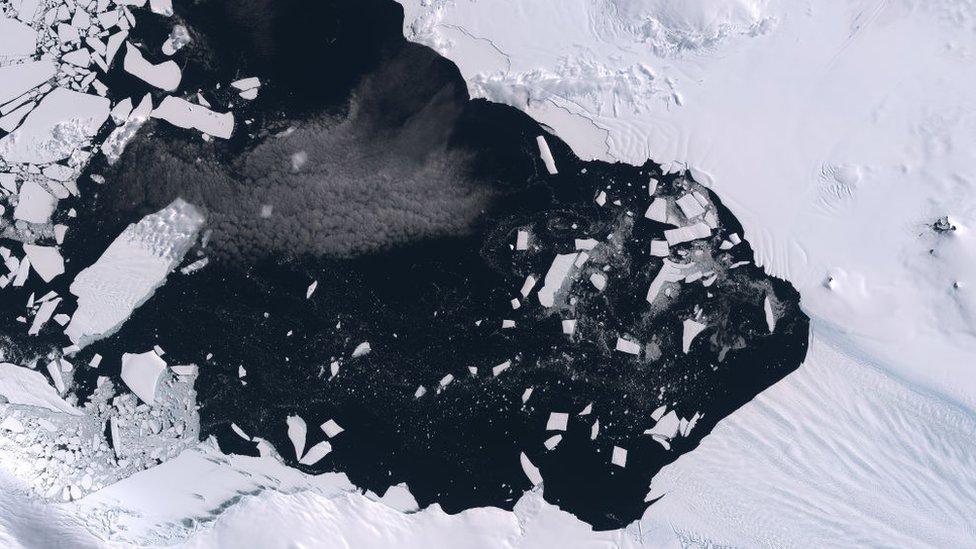Conger ice shelf collapses in Antarctica
- Published
- comments

This picture from the Sentinel-1 satellite shows iceberg C-38 breaking away from the Conger ice shelf as it collapsed in Antarctica.
A big ice shelf about the size of Rome has collapsed in Antarctica.
The Conger ice shelf - which measures in at around 1,200 square kilometres - broke off from east Antarctica on 15 March, according to satellite information.
Dr Catherine Colello Walker, a scientist at Nasa and the Woods Hole Oceanographic Institution, said that although the Conger ice shelf was on the smaller side, "it is one of the most significant collapse events anywhere in Antarctica since the early 2000s when the Larsen B ice shelf disintegrated".
"It won't have huge effects, most likely, but it's a sign of what might be coming," she said.
East Antarctica recorded unusually high temperatures last week, with the Concordia Research Station based there clocking a record temperature of -11.8 degrees Celsius on 18 March. The average yearly temperature for this area is around -50 degrees Celsius.
What is an ice shelf and why do they break?

A picture of the A-74 iceberg, which was calved from Antarctica's Brunt Ice Shelf in February 2021.
Around Antarctica, there are a couple of very big ice shelves - one called Ross is the biggest, almost twice the size of the entire UK, followed by the Filchner-Ronne Ice Shelf.
Ice shelves are permanent floating sheets of ice, that act as a kind of barrier between the land, and the sea.
As they already sit in the ocean, ice shelves don't add to rising sea levels, but if a whole shelf collapses, then then it can mean that the glacial ice sitting on land can slip and flow into the sea, raising sea levels.
Every year ice shelves can grow or shrink up to a mile, before eventually a crack will begin to form in the ice, and a chunk may break off.
This is part of a natural cycle called calving that all ice shelves go through, and can take many years.
- Published22 May 2021

- Published18 July 2018

- Published12 June 2021

